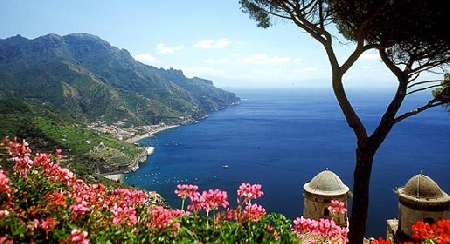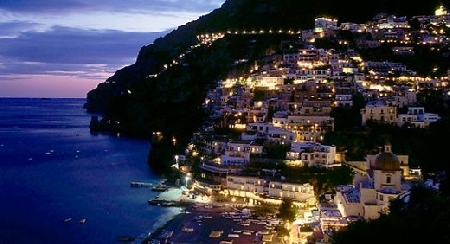

Kennen Sie das Land wo die Zitronen blühen …
The Amalfi coast is one of those very special places in the world which have a charm able to enchant men from any culture, in any time.
The Romans, with their unique taste for beauty, were fascinated by the place and fixed the very first human settlements in the area, whose most beautiful remains consist now in the excavation of a patrician villa in Minori (the roman Reghinna Minor).
In the Middle Age Scala (the home town of Gerardo Sasso, the founder of the Order of the Knights of Malta) and Ravello were the seat of noble and rich families which built patrician palaces and commissioned wonderful pieces of art for the cathedrals and churches of Ravello. Amalfi too greatly developed, being the major harbour and a commercial trade centre since the 9th century. These were the years of the Sea Republics, when Amalfi competed with Venice, Pisa and Genoa for the supremacy along the commercial sea routes to the East and brought back not only goods but also cultural influences and science, especially from the Arabs.


The Amalfi coast was “discovered” again by the northern European travellers, artists and scholars engaged in the “Grand Tour” in the eighteenth and nineteenth centuries. One of the very first travellers who ventured south of Rome was Goethe, who collected his impressions and memories in the world famous “Travel in Italy”. He was struck by the beauty of the environment combined with the simplicity of the rural life of the pheasants and of the fishermen: the icons, we could say, of the Romanticism’s artists. In his memories the Amalfi coast became "the land where lemons blossom".
After Goethe, the Amalfi coast enchanted more and more artists among which we can remember Richard Wagner who, after climbing up to Ravello on donkey back, spent some time there hosted by a local noble family and found the inspiration for composing the “Parsifal” in the gardens of Villa Cimbrone, in which he said he could recognise the features of the imaginary enchanted gardens of Klingsor; or Henrik Ibsen, who spent a year in Amalfi while writing his masterpiece “Doll’s house”, in which not by chance the main character recalls memories of a travel in Campania.
In recent times the Amalfi coast has been and is being the buen retiro for many artists like the English writers E.M. Forster and D.H. Lawrence, the British statesman Winston Churchill, the Swedish actresses Greta Garbo and Ingrid Bergman, the Neapolitan actor and playwright Eduardo De Filippo, who also hosted his English friend Sir Laurence Olivier on the little island Li Galli, later sold to the Russian dancer Rudolf Nureyev, the American director Orson Welles, the Italian director Roberto Rossellini, the American writer Gore Vidal and many other people of the show business, politicians and businessmen.
The Amalfi coast main characteristic are the green mountains steeply sloping to the blue sea which beautifully contrast with the light grey rocks, the little whitewashed houses and the terraces where lemon trees and vineyards are cultivated. We could mention one hundred reasons why the Amalfi coast is included in the list of UNESCO World Heritage, but it’d be too long. Moreover we’re sure that once you’ll see it you will not need to ask anymore …
The beautiful images of the PHOTO GALLERY (click here) speak for themselves.